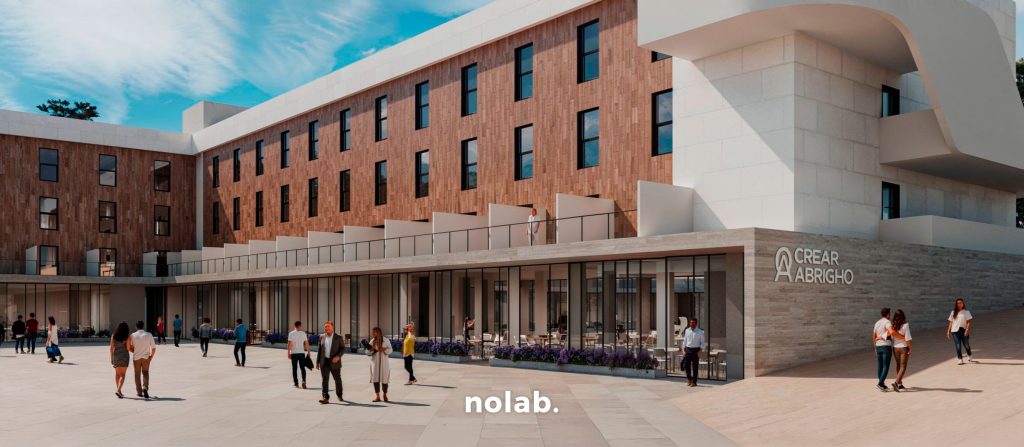The European real estate market is entering a new cycle marked by macro adjustments, stricter regulation and accelerated adoption of technologies. In this context, Spain continues to be a very attractive location for capital: Madrid and the Costa del Sol. At the same time, new ways of accessing real estate are emerging, such as fractional ownership, which allow participation in prime locations with more efficient ticketing and professional management.
Madrid: the capital that combines stability, demand and pro-residential regulation
Madrid remains attractive due to its market depth, diversified economic fabric and a legal framework that provides predictability for investors. Urban renewal, renovation projects and the professionalization of the rental supply sustain demand in well-connected areas and iconic neighborhoods.
In 2025, the City Council approved the RESIDE Plan, which regulates housing for tourist use (VUT), protects residential use and restricts the coexistence of VUT and neighbors in the same building, with few exceptions (e.g., independent access outside the historic center). This favors medium-long stay strategies and brings operational clarity to the residential investor.
Where fractional ownership fits in Madrid
Without displacing the traditional purchase or strategies such as turnkey or flipping, fractional ownership adds an option for HNW profile seeking exposure to prime neighborhoods (Salamanca, Chamberí, Castellana, Retiro) with less capital tied up. The thesis: real co-ownership through a corporate structure (SPV), planned use of weeks per year and 360° professional management. Collateral benefits: diversification (fractions in more than one asset/location), governance between partners and possible resale of the fraction after agreed periods. This is particularly consistent with an environment that favors responsible stays over intensive tourist rentals.
Costa del Sol: Mediterranean lifestyle with international demand
Marbella, Estepona and Malaga continue to attract global capital for their quality of life, connectivity and high-end second homes. The region continues to improve infrastructure and consolidate the premium segment. By 2025, the Spanish regulatory context reinforces the professionalization of rental and regulatory compliance; several cities and the government itself have intensified control over VUTs, and Madrid has tightened its specific framework with RESIDE. MMCG
Note on Golden Visa: The Golden Visa real estate route ceased to be available in Spain from 3 April 2025. Applications filed before that date retain rights and renewals, but new applications for home purchase are no longer accepted. For investment residency, alternative (non-real estate) avenues persist. Global Citizen SolutionsBlevinsFranksElHuffPost
Sustainability in projects
Sustainability is no longer an option but a key requirement in the European real estate market. In Madrid and the Costa del Sol, developers are incorporating ESG (environmental, social and governance) criteria into their projects. Energy-efficient buildings, which reduce the carbon footprint and optimize the use of resources, are not only attractive to tenants, but also to investors looking for long-term resilient assets. In 2025, projects that include these elements will offer the highest returns and resale value.

Implications of artificial intelligence
AI is revolutionizing the real estate industry on multiple fronts. In Madrid, for example, artificial intelligence is helping to identify investment patterns and optimize asset management, while on the Costa del Sol, predictive models are being used to anticipate rental demand and improve the tenant experience. In addition, AI is being used for property monitoring and predictive maintenance, which minimizes costs and maximizes operational efficiency.
3. Purchase of real estate for renovation and rental
Buying properties for refurbishment has become an emerging trend in Spain, especially in Madrid and the Costa del Sol. International investors are acquiring second-hand properties with the aim of refurbishing them, not only for their personal use, but also for long and short term rentals. Renovating older properties with modern and efficient approaches can generate high returns on investment, as demand for both tourist and residential rentals continues to rise.
Practical recommendations for investing in Spain
- Know the local regulations (municipal and regional): licenses, VUT, coexistence with residents, construction and rehabilitation. In Madrid, review the RESIDE Plan and its impact on each area and typology.
- Define the rental strategy: prioritize products with medium-long stay fit and operators with robust compliance.
- Local team: brokerage, legal and technical (architecture, project management) to navigate permits and construction.
- Diversify: combine direct purchase (residential/commercial) with complementary vehicles or models (e.g. fractional in prime locations) to balance risk, liquidity and usage.
- Prudent underwriting: sensitivity to rates and cost inflation; requires realistic capex and opex and adequate margins.
Are there any risks in this type of investment?
It is true that every investment carries risk, and the real estate market is no exception. In 2025, economic volatility and factors such as interest rates and inflation could affect financing and expected returns. Also, rising construction costs, compounded by inflation and a lack of skilled labor, present challenges for new project development.
However, in established destinations such as Madrid and the Costa del Sol, the benefits far outweigh these challenges. The sustained demand for luxury properties, both for residential and tourism use, offers long-term stability, and the trends towards sustainability and modernization, although they imply certain initial expenses, also increase the value of the assets, guaranteeing a higher and more competitive return in increasingly demanding markets.
Real estate investment in Europe in 2025 is marked by opportunities in key markets such as Madrid and the Costa del Sol. Sustainability trends, the impact of artificial intelligence and the purchase of properties for refurbishment are factors that position these regions as attractive destinations. Despite economic challenges, investors with a long-term strategy and a focus on modernization and efficiency can find Spain a safe haven for growth and profitability.










